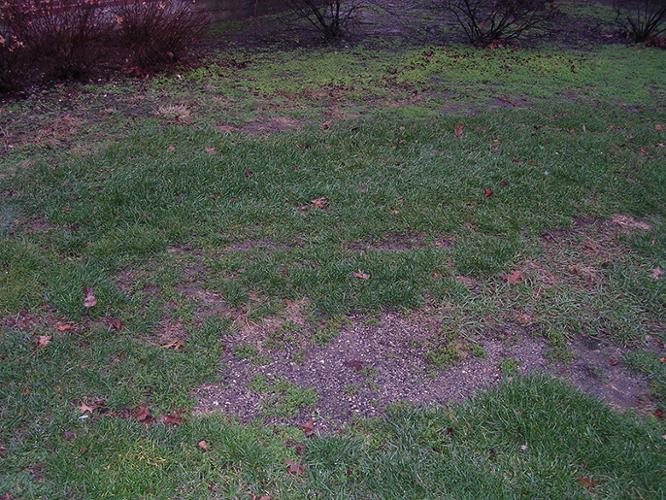Picture of the Week
December 7, 2020
Dormant Overseeding is a viable tool for thin lawns
Glenn Hardebeck, Turfgrass Research Agronomist, Department of Agronomy, Purdue University
The weather in Indiana is fast changing to winter-like conditions. Though we may have long forgotten about working on our lawn, we are just entering one of the best times to overseed a thin lawn. Dormant overseeding is superior to spring overseeding because the turfgrass seedlings will germinate slightly earlier next spring especially if wet conditions delay the spring overseeding operation. A head start of just a week or two can mean the difference between surviving a stressful summer or not. Additionally, dormant overseeding does not require mechanical cultivation (slit-seeding or power raking) to get the seed into contact with the soil. With dormant overseeding, Mother Nature will "plant" the grass seed with repeated freeze/thaw cycles. Snow is not important. The idea is to get the seed on the ground after Thanksgiving (you don't want the seed to germinate before winter) through early March so there will still be nightly freeze cycles. Kentucky bluegrass is a better cool season turfgrass to dormant seed due to its slow germination which helps avoid premature germination during an "Indian summer". The overseeding rate for Kentucky bluegrass is the same as bare ground seeding, 2-3 lbs/1000 ft2.
Dormant overseeding is as easy as fertilizing, so don't pass up the chance to make a positive impact on your lawn with minimal effort.
Click image to enlarge


